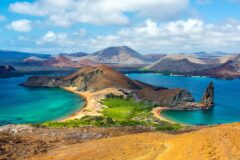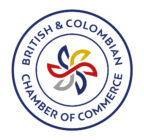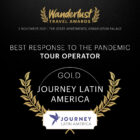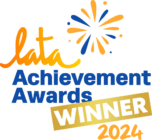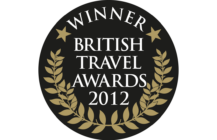
Overview & Highlights
Bolivia is one of the world’s last true adventure destinations. Travel beyond Lake Titicaca and La Paz on a journey of unpredictability including Che Guevara's trail and the salt flats of Uyuni.
- Santa Cruz: Guided city tour
- Samaipata: visit to el Fuerte Inca ruins
- Visit to la Higuera, where Che Guevara had his last stand
- Sucre: Guided city tour
- Potosí: City tour and visit to the Spanish Imperial Mint museum
- South Bolivia: Salar de Uyuni (salt flats)
- La Paz: Guided city tour with cable-car trip
- Lake Titicaca: Boat trip to Isla del Sol (Sun Island) via Moon Island
- Guided visits on the islands
This is a highlights holiday, but with a really adventurous element, as reaching these top sights in their relatively remote locations is a journey of discovery in itself. Surely the most authentic country in Latin America, Bolivia is also probably the most colourful, with highland communities preserving their mélange of religious traditions, brightly woven costumes and haunting pipe music. The tropical lowlands and Santa Cruz, where you’ll find a surprising ethnic diversity and a dynamic economy, also offers its share of surprises.
The difficulty of access to the shattered landscapes of Bolivia means many communities remain isolated from modernisation taking place elsewhere. Alongside sprawling cattle farms you’ll see smallholdings where subsistence-level farmers eke out a living from adobe farmhouses. Hidden among the canyons is the Ruta Che, a rough, lonely but incredibly scenic road following Che Guevara’s failed revolutionary campaign in Bolivia, where he is revered.
Potosí was once one of the largest and most affluent cities in the world: the silver mined in its conical hill contributed to the riches of the Spanish Empire and the Mint was located here. The city’s grand architecture reflects this long-gone prosperity, while Sucre is an elegant sun-dappled colonial city and traffic-stifled La Paz, overshadowed by a vast ice-jacketed Andean peak, stuns with its multitude of street markets. At the end of a varied trip you can relax on the peaceful Island of the Sun, with the snow-capped Andes reflected in the cobalt waters of Lake Titicaca.
Outline itinerary
Day 0
UK clients depart, arriving Santa Cruz, Bolivia, the following day.
Day 1
Transfer to your hotel in a quiet quarter of the city.
Day 2
Guided city tour of cosmopolitan Santa Cruz.
Day 3
By road into the mountains to Incan el Fuerte; on to Vallegrande via Samaipata.
Day 4
By road to Che Guevara’s ‘shrine’ at La Higuera; continue to Villa Serrano.
Day 5
Drive on through mountain landscapes to Sucre.
Day 6
Guided tour of this elegant, whitewashed colonial city.
Day 7
Climb to the bleak altiplano and Potosí; guided tour and visit imperial Mint.
Day 8
Drive through skeletal landscapes to Uyuni, overnight in a salt hotel.
Day 9
Explore the dazzling salt flats and lagoons by 4WD vehicle.
Day 10
Transfer to Uyuni airport, fly to the capital, La Paz.
Day 11
Guided city tour with cable car ride over the canyon.
Day 12
Drive to lake Titicaca; boat trip to Sun Island, overnight.
Day 13
Return to La Paz.
Day 14
Transfer to airport for international flights or extension to Amazon jungle.
Itinerary
Day 0
UK clients depart, arriving Santa Cruz, Bolivia, the following day.
Day 1
Transfer to your hotel in a quiet quarter of the city.
Transfer to your hotel, close to the city centre.
The dynamic city of Santa Cruz doesn’t quite reflect how most people imagine Bolivia. With plate glass and concrete, the sparkle of luxury four-wheel drive vehicles, and good restaurants and shopping malls the rapidly growing city wears its new-found oil wealth on its sleeve.
This prosperous lowland metropolis is wholly different from its Andean sisters, in climate, in politics and in ethnic mix. People have poured in from the altiplano to join German Mennonites, Brazilians and even Japanese in search of a better life. The sun can be fierce, the siestas always long, with heavy rain showers in the summer months.

Day 2
Guided city tour of cosmopolitan Santa Cruz.
You’ll have a guided tour of the city, purpose-built in a series of rings. You will visit the huge, shady main square, the baroque cathedral which dominates it, and the indigenous Abasto craft shops.
After the tour you might decide to explore the city some more: there are lovely parks with lawns, fountains and street art, tawdry but fascinating street markets selling everything from mobile phones, electric saws to gold jewellery and mangoes, spread over the streets around the handsome colonial core.
Coffee shops, open air bars and ice-cream parlours abound – if you need a breather.
Day 3
By road into the mountains to Incan el Fuerte; on to Vallegrande via Samaipata.
Drive out of Santa Cruz up in to the mountains: for the next three days you have your own driver and guide and can stop at will to take photos or look around. You pass through several market towns, and the landscape soon changes from cattle farms and fields of sunflowers to orchards and villages speckled with summer homes.
Canyons with blood-red cliffs fringe a winding river; follow the valley up to the prosperous little resort of Samaipata (120km).
Just before reaching the town you will turn off to visit the Inca Ruins at el Fuerte, a UNESCO World Heritage Site sitting on a ridge from where there extensive views. The site has pre-Inca carvings and post-Inca Spanish colonial buildings super-imposed on Inca walls. Owing to its relatively remote location there may well be no-one else there but it is a fascinating place.
Continue to Vallegrande, another typical Spanish-style mountain town, the place to which Che Guevara’s body was taken following his death at the hands of the Bolivian military. You can visit the laundry where he was laid out, now a shrine for his followers, and the museum dedicated to his exploits. Overnight in a small hotel here.

Day 4
By road to Che Guevara’s ‘shrine’ at La Higuera; continue to Villa Serrano.
Today you’ll be driven deep into Bolivia’s rugged mountains, the foothills of the Andes.You’ll appreciate how Che thought he could remain hidden here: the fractured, mostly treeless landscapes support only a few hamlets and simple farmsteads, range after range of purple-green sierras rise into view as you continue to La Higuera (3hrs approx), the village where Che was killed, now adorned with statues and street art commemorating his campaign. The majority of the few inhabitants will be out in their fields, making for a rather surreal experience.
Continue for a further 3 hours along an unmade road to red-roofed Villa Serrano, home of famous sculptor and musician Mauro Nuñez which has a museum and the largest charango (Andean lute) in the country. The town is well known for its December music festival. Overnight.

Day 5
Drive on through mountain landscapes to Sucre.
Continue on a good quality road to Sucre (4hrs) which lies in a remote valley at, for Bolivia, a relatively benign altitude of 2,800m. Provincial in outlook, it is nevertheless the legislative capital of the country.
There are some nice cake shops and ice cream parlours too. Afternoon at leisure to relax in this sunny city.

Day 6
Guided tour of this elegant, whitewashed colonial city.
Your guided city tour takes you to the Casa de la Libertad, an impressive house on the main square where the declaration of Bolivian Independence was signed in 1825 and La Recoleta, a Franciscan convent which offers splendid views over the valley. It has beautiful cloisters and gardens where an ancient cedar tree still stands. The adjoining chapel is notable for its intricate woodcarvings. In the third cloister is a museum exhibiting sculptures, paintings and other religious works.
You also visit the ASUR indigenous Art Museum – a 17th century colonial building. Exhibits include ancient textiles, musical instruments, costumes and ritual artefacts. A highlight is the Weavers’ Gallery, where you learn about indigenous techniques and designs.
Should you be in Sucre on a Sunday however you’ll be offered an optional (extra cost) excursion to the extraordinary indigenous market at Tarabuco, where the local costume includes a headdress based on the Spanish colonialists’ helmets. Their russet and gold weavings are celebrated worldwide for their intricate embroidery. (In this case the city tour of Sucre will take place the previous day).
Day 7
Climb to the bleak altiplano and Potosí; guided tour and visit imperial Mint.
A scenic 3hr drive to Potosí along a paved road ascending to the high plains of the stark wilderness of the altiplano, passing crops of peas, beans and cereals.
At an altitude of 4,090m Potosí is the highest city in the world. Its former wealth lay in its silver; today it lies in the vestiges of its history and the grand buildings born from a city that was quite literally founded on a mountain of wealth – the Cerro Rico (Rich Hill) with its rich seams of silver.
Today you’ll find ornate churches, monuments, neat cobbled streets and the Casa Real de la Moneda (Royal Mint), one of South America’s finest colonial buildings. The tunnels which honeycomb the Cerro Rico, are as dark and poisonous as the city’s gruesome past.
However, with its narrow streets and grandiose architecture it is one of Bolivia’s great treasure troves. Your walking tour takes you to some of the city’s principal historical attractions. These include San Lorenzo church, with its baroque façade of flesh coloured stone mined from the nearby hills. Inside, works of art adorn the ornate altar along with two original paintings by Holguin.
Also visit Santo Domingo church and the vast 16th century Cathedral.
You’ll also visit the Casa de Real de la Moneda which occupies an entire block near the cathedral. This mint created the currency for the entire Spanish Empire. The museum has a fascinating history, comprising not just the Royal Mint, but also a prison, fortress, and HQ for the Bolivian army during the Chaco War. The museum displays crafted silverware, oil paintings and Bolivia’s first locomotive train.

Day 8
Drive through skeletal landscapes to Uyuni, overnight in a salt hotel.
Continue by road across the bleak altiplano en route to Uyuni, travelling through dusty landscapes punctuated by weird wind-fashioned rock formations. It is in this region that Butch Cassidy and the Sundance Kid are reckoned to have ambushed hapless folk transporting money and minerals to and from the mines.
Upon arrival in Uyuni you can look around this isolated, chilly highland town and visit the “train cemetery” full of abandoned, rusting engines evocative of more prosperous and dynamic times.

Day 9
Explore the dazzling salt flats and lagoons by 4WD vehicle.
Travel by 4WD vehicle to the Salar de Uyuni. The bleak plains of the southern altiplano make for an austere, uncompromising wilderness, scoured by bitter gales, where cut-glass lakes and un-trodden, luminous salt pans reflect the vast dome of an icy sky.
At 3,650m the salar is the highest salt desert in the world and arguably the largest, covering over 12,000 sq km. When the rains fall, the desert is turned into a mirror, salt plains and sky fuse, and the world is turned upside down. In the dry season, however, the dazzling white of the salt crystals extends as far as the eye can see: an other-worldly sight.
While its few wind-buffeted Aymara inhabitants scratch a meagre living from the dusty soil, there are landscapes of unexpected variety and surreal beauty. You’ll observe desolate, denuded peaks, sunlit lagoons of gem-stone clarity and a white sea of salt that bends the horizon.
Conditions permitting, travel on to the foothills of the Tunupa volcano and the village of Coquesa with its ancient fort and preserved mummies. The road takes you deep into the salar to the Isla de Pescadores, a small volcanic island covered in giant cacti. Return to Uyuni.

Day 10
Transfer to Uyuni airport, fly to the capital, La Paz.
Transfer to the airport for your 1hr flight to La Paz. If it is clear you will have staggering views of the landscape, and will appreciate the vastness of the altiplano.
Set in a deep canyon, dominated by the snow-capped peak of Mount Illimani, La Paz (3,632m) is the highest capital in the world. The colonial core around Plaza Murillo retains much of its quirky Spanish charm, lively with families and children with balloons at the weekend.
Beyond, there are cavernous indigenous markets with restaurant grills open to the street and narrow alleyways lined with museums, churches and craft shops. Ambulant vendors in felt bowler hats and colourful shawls crouch below the skyscrapers in tree-lined modern avenues.

Day 11
Guided city tour with cable car ride over the canyon.
At first sight La Paz is an anarchic jumble of buildings clinging to craggy slopes and marching down a sinuous river bed.
But partly owing to this topography it’s easy to get around, the streets are tightly packed and crammed with interesting features. A city tour takes you to the narrow lanes around the colonial heart, exploring markets such as the famous Mercado de las Brujas (Witches’ Market) as well as the stately boulevards of the modern business and residential neighbourhoods.
How the city’s structure knits together is best appreciated from the air, and it is now possible for you to enjoy stupendous views from a cable-car erected primarily to relieve traffic congestion on the commuter routes between La Paz city centre and the city of El Alto on the canyon rim, hundreds of metres above. Eventually this system will be the largest urban cable-car network in the world: for now, it has the added asset of being a superb new attraction for visitors.

Day 12
Drive to lake Titicaca; boat trip to Sun Island, overnight.
It’s a 2.5hr drive (shared tourist transport) to Copacabana on the shores of Lake Titicaca which attracts many pilgrims who make the trip often from great distances on foot.
Lake Titicaca, the world’s highest navigable lake, is also the most sacred in the Andes. Set on the grassy altiplano, it is a body of deep sapphire water lapping shores of fertile silt where cereals and vegetables are cultivated from a surprisingly large number of relatively prosperous indigenous communities. The local people use the swaying tortora reeds to build their traditional boats and even islets and homes (the Uros Islands). The birdlife is abundant and varied, bird-watching can be extremely rewarding here.
You’ll board a hydrofoil to take you across the lake to Moon Island. Visit the Iñak Uyu Sun Virgins temple, considered to be one of the most important ruins on the lake. From there it’s a 10min crossing to Sun Island, birthplace of the Inca gods. Take a scenic walk along Inca trails to your hotel in time for lunch.
You have the afternoon free to explore the island trails, dotted with ancient ruins and tiny villages, and not a car or road in sight.

Day 13
Return to La Paz.
Descend to Yamani harbour and visit the Inca stairways and Sacred Fountain, believed to give eternal youth and happiness. Lunch at the archaeological and panoramic Uma Kollo restaurant, which has lake views from its balcony and original Inca walls.
Cross the lake to Copacabana (30mins) before boarding the bus to Huatajata, visiting the Andean Eco-Village at Hotel Inca Utama. The project encompasses all aspects of local culture and nature, and includes reed boat and altiplano museums, a handicrafts workshop, mortuary towers and botanical garden.
Continue back to La Paz (approx 1hr). (Although travelling on shared transport services you will be accompanied by your own guide, who will lead you around the visitor sites on a private basis).

Day 14
Transfer to airport for international flights or extension to Amazon jungle.
Transfer to la Paz airport for your international flight home.

Essentials
Tour info
Transport
1 flight (1hr); 9 scenic road journeys.
Accommodation
The unique and characterful accommodation on this trip reflects Bolivia’s glorious multi-layered history and culture.
Our city hotels are converted colonial buildings with plenty of historic charm but modern comforts. This adventurous holiday also visits some remote locations where accommodation options are limited, however we have selected what in our view is the best available and some have considerable charm, including a hotel constructed from salt.
Meals
Breakfast daily, lunch days 4,8,11,12; dinner day 8 full board days 3,4,9,12. Some lunches are packed box lunches.
Summary Of Nights
14 days, 13 nights: Santa Cruz 2; Vallegrande 1; Villa Serrano 1 ; Sucre 2; Potosí 1; Uyuni 2; La Paz 2 ; Sun Island 1 ; La Paz 1.
Trip Suitability
There are a few long days of travel on this trip, but as for the most part you have private transport you will have maximum comfort and can make a stop at will.
If you have a disability or other special requirements, please contact us.
Guides
We carefully select our local partners, some of whom we have worked with for over 25 years. Their English-speaking guides understand the expectations of our clients very well, and are consistently singled out for praise by the latter on their return.
Climate
The climate in Santa Cruz is tropical and humid, with temperatures rising to 40°C in the summer months of Dec-Mar. It can rain at any time, but there is also plenty of sun. As you climb into the mountains on your journey towards Sucre the air is fresher and temperatures significantly lower.
Most rain falls Dec-Mar in both Sucre and Potosí: there is a little less sunshine in this period in what are otherwise sunny cities. Potosí is at a higher altitude and can be very cold at night, especially in Jun-Jul.
On the salt flats, most rain falls between January and April when the roads can be very muddy and the itinerary around Uyuni is subject to change. The dry season, Jun-Sep, guarantees sun and an easy drive across the flats, but it’s cold at night with temperatures falling below zero.
The weather in La Paz and Lake Titicaca is dry from late Apr-Oct with daytime temperatures in the high teens/low 20s° C in the sun. Dec-Jan (nominally summer) can be cloudy, and chilly at this altitude (3,500-3,800m).
Altitude
Your stays in Sucre (2,800m), Potosi (4,090m), Uyuni (3,656m), La Paz (3,632m) and Lake Titicaca (3,812m) are at high altitude. Because the trip gains altitude slowly, most people are only mildly affected and if you drink plenty of water and allow your body to acclimatise (don’t exert yourself or drink alcohol for the first couple of days at altitude), you should be OK. Symptoms vary: most common are mild headaches, slight nausea and breathlessness. If you don’t recover in a day or two speak to our representatives; in very rare instances it is necessary to descend to lower altitudes.
Clothing And Special Equipment
If you travel in the Andean dry season, May to October, it will be warm in the sunshine but at altitude chilly in the shade, and at night so you’ll need layered clothing, including fleece, hat, scarf and gloves. From November to April you can expect some rain so you should add waterproofs. In both seasons sunblock, sunglasses and good walking shoes or boots are necessary. Bring a little light loose clothing for the warmer climate in the lowland east.
How To Take It
Cash machines are available in all major cities and towns in both countries, and so taking a debit or credit card with a PIN number is the most convenient way of withdrawing money while on your trip, and in most shops and restaurants you can also pay by card. There are many ATMs in Santa Cruz in La Paz and they are also present in Sucre and Potosí; in many you can withdraw pesos or US dollars. Select “Savings Account” from the menu, even for a debit card. However, since cards can get lost, damaged, withheld or blocked, you should not rely exclusively on a card to access funds.
Since you are also visiting remote places with few facilities, we recommend that additionally you take a reasonable quantity of US dollars cash (no more than is covered by your insurance), which you can exchange into local currency. Dollar bills should be in good condition, soiled or torn bills may be refused.
Currency
The unit of currency in Bolivia it is the peso Boliviano.
Tipping
Tips are welcomed and local guides often rely on their tip as a significant proportion of their income.
Most service industry workers will expect a tip of some kind and so it is useful to have spare change for hotel porters, taxi drivers and the like. It is common to leave 10 – 12% in restaurants.
Insurance
Travel insurance is essential.
Details of our recommended policy can be found on our Travel Insurance page.
Airport Taxes
If you have purchased your flights through Journey Latin America, the international departure tax is usually included in the ticket.
Vaccinations
Preventative vaccinations are recommended against the following: polio; tetanus; hepatitis A. You should consult your GP for specific requirements, including advice on yellow fever and malaria tablets. For specific requirements you must consult your GP.
You can also find helpful information on the Masta Travel Health website.
Visas
Holders of a full British passport do not require a visa, although passports must be valid for at least 6 months after the trip begins. Anyone with a different nationality should enquire with us or check with the relevant consulate.
If flying to the US, or via the US you will need to fill in your online ESTA application.
What's included in the price
- Services of our team of experts in our London office
- Services of Journey Latin America local representatives and guides
- All land and air transport
- Accommodation as specified
- Meals as specified
- Excursions as specified, including entrance fees
Included Excursions
- Santa Cruz: Guided city tour
- Samaipata: visit to el Fuerte Inca ruins
- Visit to la Higuera, where Che Guevara had his last stand
- Sucre: Guided city tour
- Potosí: City tour and visit to the Spanish Imperial Mint museum
- South Bolivia: Salar de Uyuni (salt flats)
- La Paz: Guided city tour with cable-car trip
- Lake Titicaca: Boat trip to Isla del Sol (Sun Island) via Moon Island
- Guided visits on the islands
What's not included in the price
- Tips and gratuities
- Meals other than specified
- Airport taxes, when not included in the ticket
- Optional excursions
